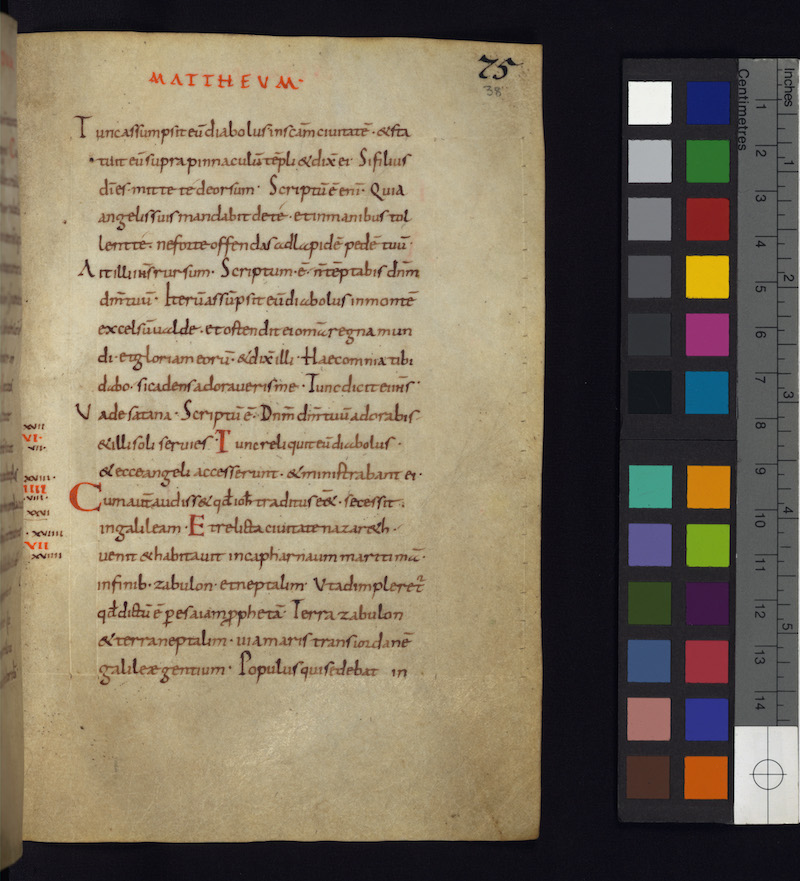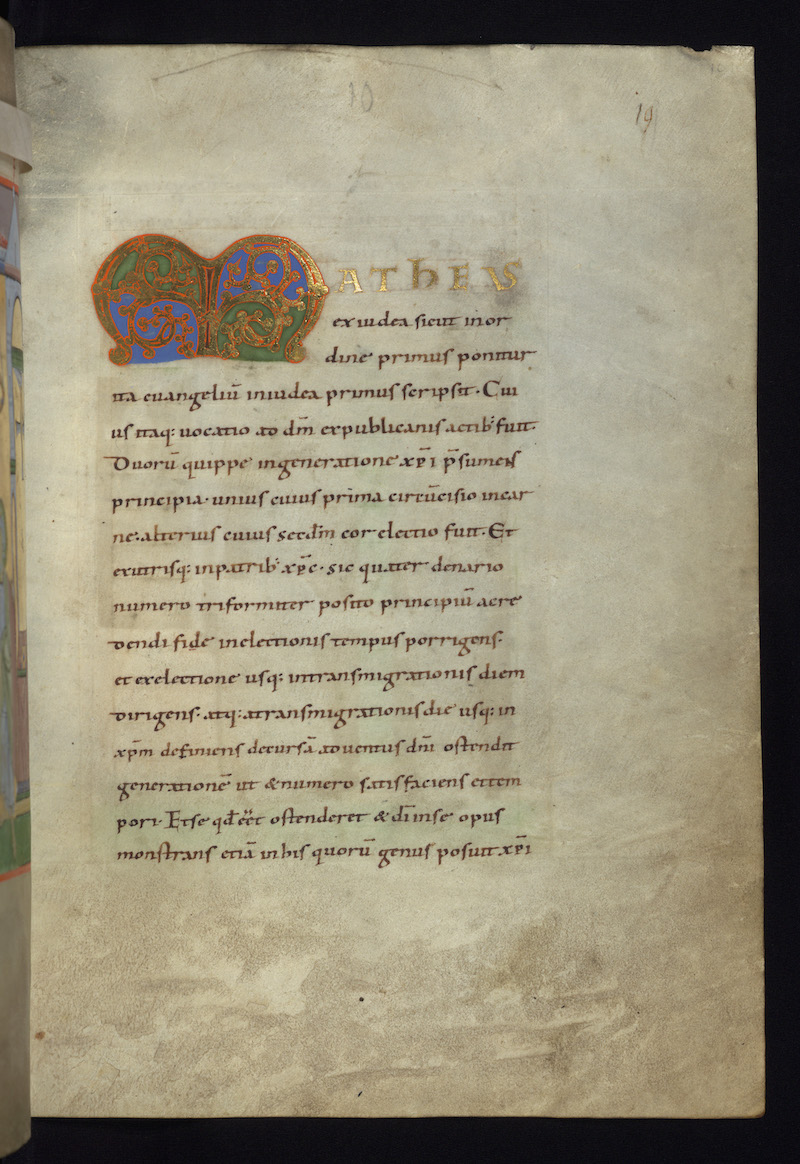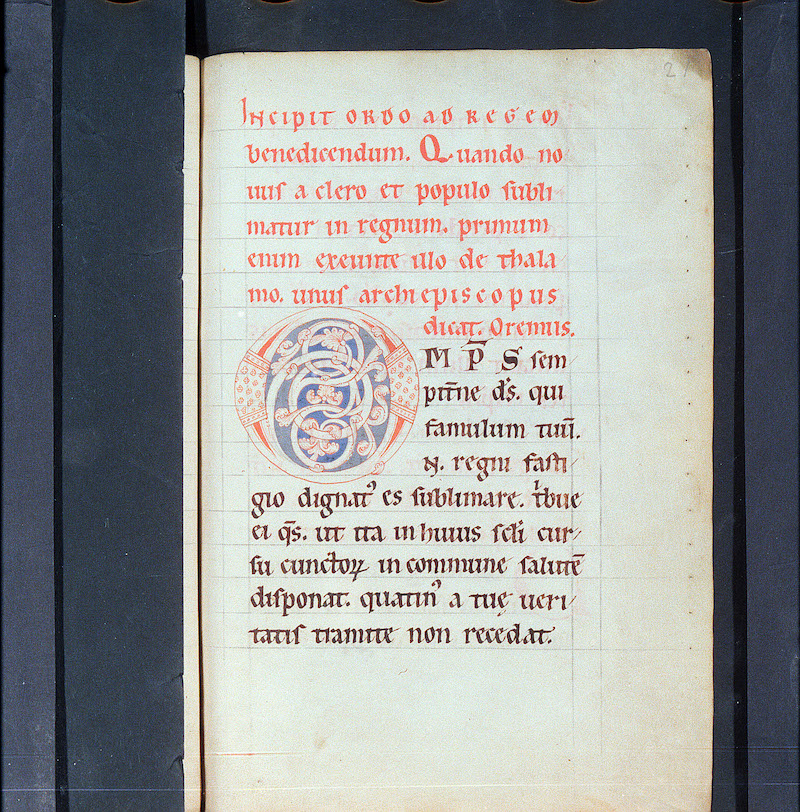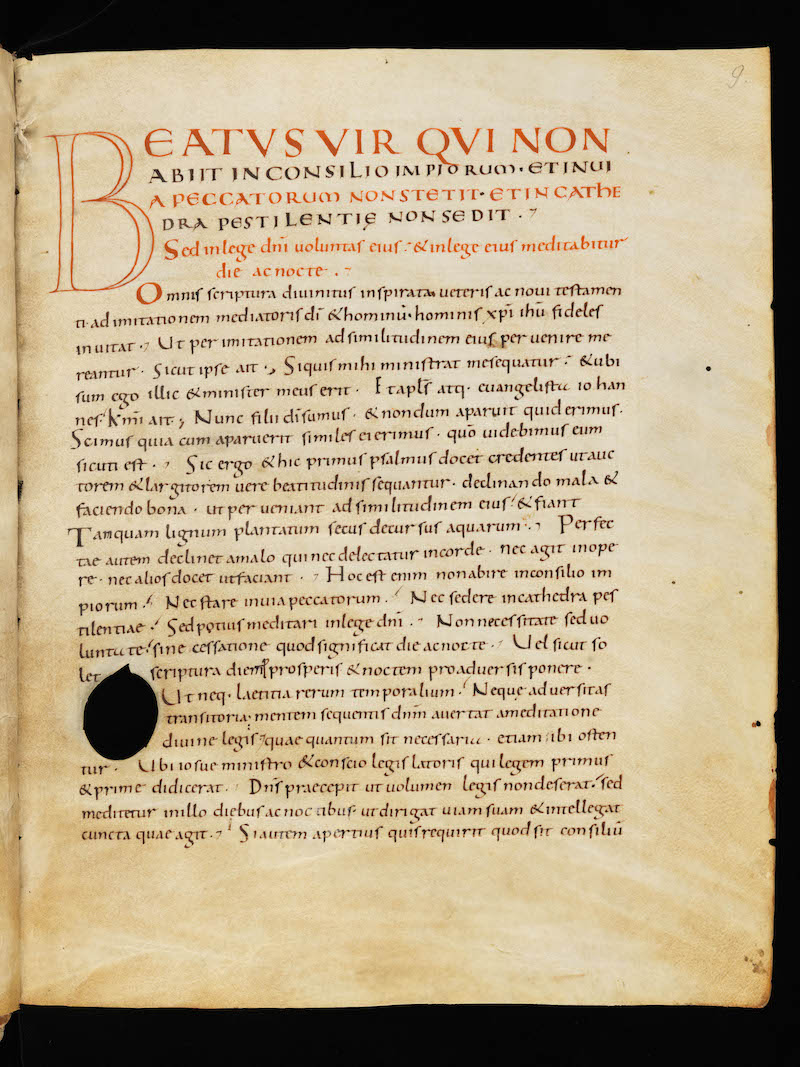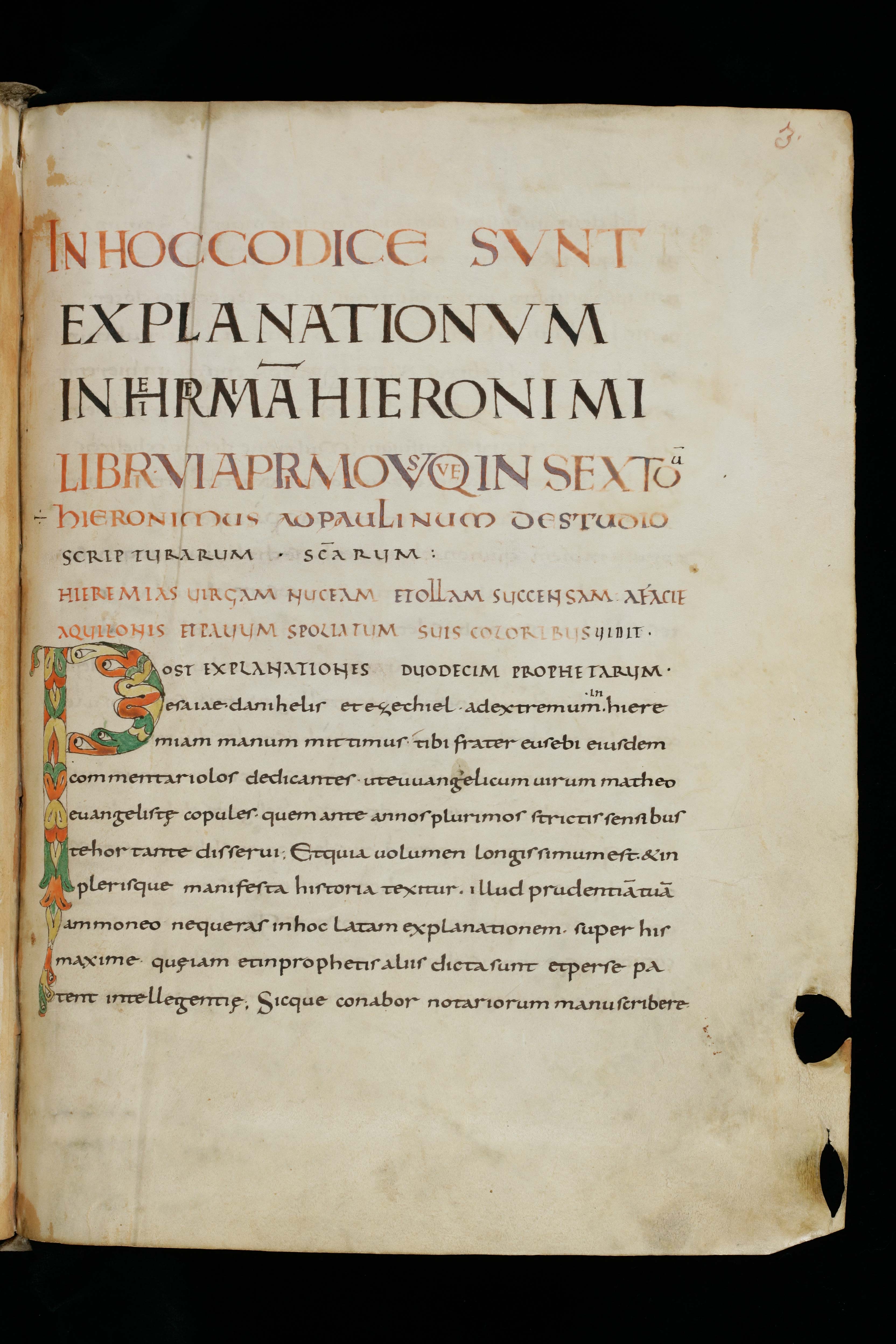
Caroline Minuscule; Square Capitals; Uncial; Rustic Capitals, 9th century
-
Title
Jerome, In Ieremiam (On Jeremiah) -
Text
Title and introductory letter to Paulinus -
Language(s)
Latin -
Writing System
Roman -
Script(s)
Caroline Minuscule; Square Capitals; Uncial; Rustic Capitals -
Country
Switzerland -
City
St. Gall -
Repository
Stiftsbibliothek -
Shelf Mark
116, page 3 -
Century
9th century -
Year Range
800-835 -
Place Of Origin
Switzerland, St. Gall -
Bibliography
Anton von Euw, Die St. Galler Buchkunst vom 8. bis zum Ende des 11. Jahrhunderts, Band I: Textband (2008), 322-323, no. 29.
Corpus scriptorum ecclesiasticorum latinorum vol. 59, p. 3, lines 1-11
-
External Facsimile
This early Caroline minuscule manuscript was produced at St. Gall in the first third of the 9th century, and is listed in St. Gall's earliest library catalogue. The manuscript combines the layout features of Caroline minuscule with somewhat eccentric decorative elements that show Merovingian and English influences.
This page, the opening of the dedicatory preface to Jerome's commentary on Jeremiah, uses a fully-developed hierarchy of scripts in the Carolingian manner, with the titles descending from Square Capitals through Uncials to Rustic Capitals. The scribe makes creative use of smaller capitals to fit his text into each line, and the alternation of red and black ink in the heading is somewhat irregular.
The minuscule script of the main text is wholly Caroline, both in individual letterforms and in the proportions of letter parts, lines, and spacing. a is always the Caroline a and shows no trace of St. Gall's typical pre- or early-Caroline a in the form cc. Letters are carefully distinguished from one another. Word spacing is fairly well developed. The scribe shows a marked tendency to attach forms of esse to the words that precede them (which is not typical of the most advanced practice of this period) as well as to attach prepositions to their objects (which is normal for the whole of the Middle Ages).
A contemporary corrector – likely not the main scribe – makes corrections with a slightly finer pen in several places.
Acknowledgements: Described by Carin Ruff
Transcription
1 IN HOC CODICE SVNT
2 EXPLANATIONVM
3 IN HIEREMIA(M) HIERONIMI
4 LIBRI VI A PRIMO VSQVE IN SEXTO\u(m)/
5 \\ ÷ // HIERONIMVS AD PAVLINVM DE STVDIO
6 SCRIPTVRARVM ∙ S(AN)C(T)ARVM :
7 HIEREMIAS VIRGAM NVCEAM ET OLLAM SVCCENSAM : A FACIE
8 AQVILONIS ET PAVLVM SPOLIATVM SVIS COLORIBVS /VIDIT ∙\
9 POST EXPLANATIONES DVODECIM PROPHETARVM ∙
10 esaiae ∙ danihelis ∙ et ezechiel ∙ ad extremum .\.in/ hiere(-)
11 miam manum mittimus ∙´ tibi frater eusebi eiusdem
12 commentariolos dedicantes ∙ ut euangelicum uirum matheo
13 euangelistȩ copules ∙ quem ante annos plurimos strictis sensibus
14 te hortante disserui : Et quia uolumen longissimum est . et in
15 plerisque manifesta historia texitur . illud prudentia(m) tua(m)
16 ammoneo ne queras in hoc latam explanationem. super his
17 maxime ∙ quȩ iam et in prophetis aliis dicta sunt et per se pa(-)
18 tent intellegentiȩ; Sicque conabor notariorum manu scribere
Paleographic Features
1. Line 5 in the heading shows features typical of a late form of Uncial: the hasta of e is almost at the midpoint of the letter; the left stem of a includes a carefully-formed loop with a hairline extension; both lobes of m are very rounded; and the stem of d leans way over to the left.
2. Corrections at the end of line 8 and above extremum in line 10: the correcting hand uses a thinner pen and has a telltale stroke at the base of I which suggests this might not be the main scribe correcting himself. The correction of the grammar at the end of line 4 suggests the same conclusion.
3. Among the rare errors in what is otherwise highly-developed word separation are tehor tante for te hortante and longissimumest for longissumum est (line 14).
